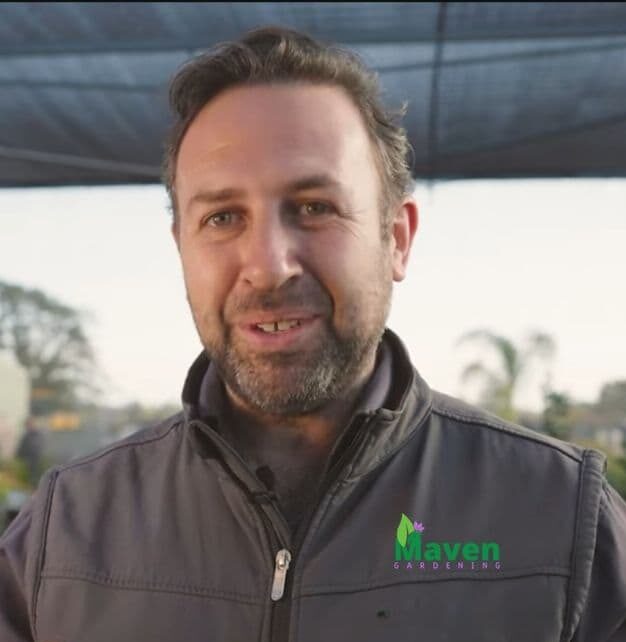Deep Water Culture (DWC) Hydroponics: Tips for Maximizing Yields
Deep Water Culture (DWC) hydroponics is a way to grow plants without soil and is very efficient and effective for growing many types of plants. This guide will explain what DWC hydroponics is, how to set it up, and tips for growing.
What is DWC Hydroponics?
DWC hydroponics involves suspending roots in an oxygenated nutrient solution so that the plant can uptake nutrients directly and grow fast. This method is suitable for both beginners and experienced growers because it’s simple and efficient.
DWC Hydroponics Benefits
Fast Growth: Plants can absorb nutrients directly.
Water Efficient: Uses less water than soil gardening.
Pest and Disease Control: Less chance of soil-borne diseases and pests.
Versatile: Suitable for many types of plants, such as leafy greens, herbs, and fruiting plants.
DWC Setup
Setup Materials
- Reservoir or container
- Net pots
- Air pump and air stones
- Airline tubing
- Nutrient solution
- pH and EC meters
Step-by-step setup of Deep Water Culture
- Reservoir: Choose a container big enough to hold the solution and room for the roots.
- Air Pump and Air Stones: Place air stones at the bottom of the reservoir and attach them to the air pump with airline tubing.
- Fill with Solution: Mix the solution according to the instructions and fill the reservoir.
- Put Plants in Net Pots: Place plants in net pots, roots in solution.
- Monitor and Maintain: Check pH and solution levels and adjust as needed for maximum growth.
DWC Grow System Variations
- Bubbleponics: Same as DWC but with a water pump that feeds nutrients to the plants.
- The Kratky Method: A passive DWC system for small setups.
- Recirculating DWC (RDWC): Connect multiple reservoirs for larger systems to centralize solution management.
Ideal Water Temperature for DWC Systems
Temperature is key to a successful DWC hydroponics system. For most plants in the system, the ideal temperature range is 65–75°F (18–24°C). That is where nutrients are absorbed, and the roots grow best there. Cooler temperatures slow down growth, and warmer temperatures cause oxygen deficiencies and create an environment for disease-causing pathogens to grow. Investing in a water chiller or heater will help you maintain a consistent temperature, especially during extreme weather. Remember, temperature is the key to a healthy DWC garden.
DWC Grow Systems Need Sterile Reservoirs?
A sterile reservoir is the base of a healthy DWC hydroponics system. The nutrient-rich water in the reservoir is the lifeblood of your plants. Any contamination can cause root rot, nutritional deficiencies, and stunted growth. To keep your reservoir sterile:
- Start with fresh water and a sanitized reservoir.
- Clean the reservoir regularly and change the nutrient solution.
- Don’t introduce contaminants by using clean tools and handling plants with care.
Adding beneficial microbes can also help maintain a healthy ecosystem in the reservoir and prevent bad pathogens from taking hold.
Dissolved Oxygen Meters and DWC Systems
Oxygen is key to root health and nutrient uptake in DWC systems. Dissolved oxygen meters monitor oxygen in the nutrient solution. They give you real-time data so you can adjust to keep oxygen levels optimal. Aim for 5–6 ppm in your system. Water temperature and aeration can affect oxygen levels, so monitoring is crucial. A dissolved oxygen meter lets you create an oxygen-rich environment for your plants.
How do I prevent root rot in my DWC?
Root rot prevention is key to healthy plants in your DWC hydroponic system. Here’s how:
Hygiene and Sterilization:
- Start with clean equipment. Sterilize containers, air stones, and growing media before setting up your setup.
- Regularly check and clean the reservoir to prevent algae and bacterial growth.
Oxygenation:
- Oxygen is key. Use good quality air stones and aeration.
- Check dissolved oxygen (DO) levels with a DO meter. 6–8 ppm is ideal.
Water Temperature:
- Keep the water temperature between 65 and 75 °F (18 and 24 °C).
- Cooler water holds more oxygen and causes less root rot.
Water Level Management:
- Keep the water level consistent. Don’t let roots dry out or sit too deep.
- Use a water level indicator or mark the reservoir to make it easy to monitor.
Nutrient Solution Strength:
- Dilute nutrients according to the plant’s needs. Overconcentrated solutions stress roots.
- Check and adjust nutrient strength based on growth stages.
Beneficial Microbes:
- Introduce beneficial bacteria and mycorrhizal fungi to the system.
- These microbes compete with bad pathogens and promote root health.
Root Zone Inspection:
- Regularly check for root rot (brown or slimy).
- Trim affected roots ASAP to prevent spread.
Remember, a proactive approach is key to preventing root rot. By maintaining optimal conditions and practicing good hygiene, you’ll keep your DWC plants thriving!
Cleaning a DWC Hydroponic System
Keeping your Deep Water Culture (DWC) system clean and running well is key to healthy plant growth. Regular cleaning prevents bad bacteria, algae, and pathogens. Here’s how to do it:
- Drain the Reservoir:
- Drain the nutrient solution from the reservoir.
- Remove any plant debris or roots.
- Disassemble the Components:
- Take apart the system components, lids, net pots, air stones, and tubing.
- Rinse them with warm water.
- Scrub and Soak:
- Use a soft sponge or cloth to scrub the reservoir, lid, and net pots.
- Soak them in a hydrogen peroxide solution (1 part hydrogen peroxide to 10 parts water) for at least 30 minutes.
- Rinse well.
- Clean Air Stones and Diffusers:
- Air stones and diffusers can accumulate mineral buildup and algae.
- Soak them in a vinegar solution (1 part vinegar to 3 parts water) for 30 minutes.
- Rinse well.
- Inspect Tubing and Pump:
- Check the tubing for clogs or debris.
- Run clean water through the tubing to flush out any residue.
- Clean the pump impeller if needed.
- Reassemble and Refill:
- Put everything back together.
- Refill the reservoir with fresh water and nutrients.
- Final Rinse:
- Run the system for a few hours with clean water to ensure everything is flushed out.
- Adjust the pH and nutrient levels as needed.
Tips:
- Clean your DWC every month.
- Check water temperature and oxygen levels.
- Replace the air stones when they stop working.
Nutrients in Deep Hydroponics
Solution: Use a balanced hydroponic solution and adjust for plant growth stages.
pH: 5.5–6.5 for maximum nutrient uptake.
EC: Check the concentration of the solution with EC.
Ideal Plants for DWC Setup
Leafy Greens: Lettuce, spinach, and kale.
Herbs: Basil, parsley, and mint.
Fruiting Plants: Tomatoes, peppers, and cucumbers.
Tips to Maximize DWC Yields
- Water Level Management:
- Check water levels and top up as needed.
- Use a pH meter to balance pH.
- Nutrients:
- Use high-quality hydroponic nutrients.
- Adjust nutrient strength according to growth stages.
- Dissolved Oxygen (DO):
- DO levels are key to root health.
- Use air stones and ensure proper aeration.
- Temperature:
- Keep the water temperature between 65°F and 75°F.
- Cooler water holds more DO.
- Lighting:
- Provide enough light for photosynthesis.
- LED grow lights work well for DWC.
FAQs
What is DWC hydroponics?
DWC hydroponics grows plants with roots in a nutrient solution.
What plants can I grow in a DWC?
Leafy greens, herbs, tomatoes, peppers, and some fruiting plants.
How often do I change the solution?
Change the solution every 1-2 weeks.
Ensure proper oxygenation with air stones and maintain clean equipment to prevent root rot.
How do I stop root rot in my DWC?
Air stones and cleaning equipment.
Can I use tap water in my DWC?
Yes, but check and adjust the pH.
How do I know my plants are getting enough oxygen?
White roots = healthy oxygen, brown slimy roots = lack of oxygen.
Conclusion
DWC hydroponics is simple yet powerful. Master the principles and best practices, and you’ll get amazing yields and healthier plants. Remember to check water levels, adjust nutrients, and prioritize DO (Dissolved Oxygen) for a thriving DWC garden.
Remember, Deep Water Culture Hydroponics is not just about growing plants; it’s about growing a greener future!

Meet Milan Cole, your urban gardening pro!
Milan Cole, chief content writer at Maven Gardening and an urban gardening expert, is passionate about helping city dwellers cultivate their green thumbs. Armed with extensive horticultural knowledge, Milan provides practical advice for overcoming urban gardens’ challenges, like limited space, water scarcity, and reduced sunlight.
His expertise extends beyond traditional methods, encompassing innovative approaches like hydroponic and aquaponic systems and sustainable gardening practices. Milan skillfully adapts these techniques to urban environments, considering factors like pollution and climate change.
In his clear and concise writing, Milan offers actionable solutions for anyone wanting to bring life to an urban space. He shares valuable insights into growing herbs in tight spaces, maximizing the potential of window boxes, and transforming even the most miniature balconies into thriving green oases.
Milan’s guidance is straightforward and practical, making it ideal for anyone looking to cultivate their own urban garden, regardless of prior experience.
Join Milan Cole on your journey to metropolitan Eden!



